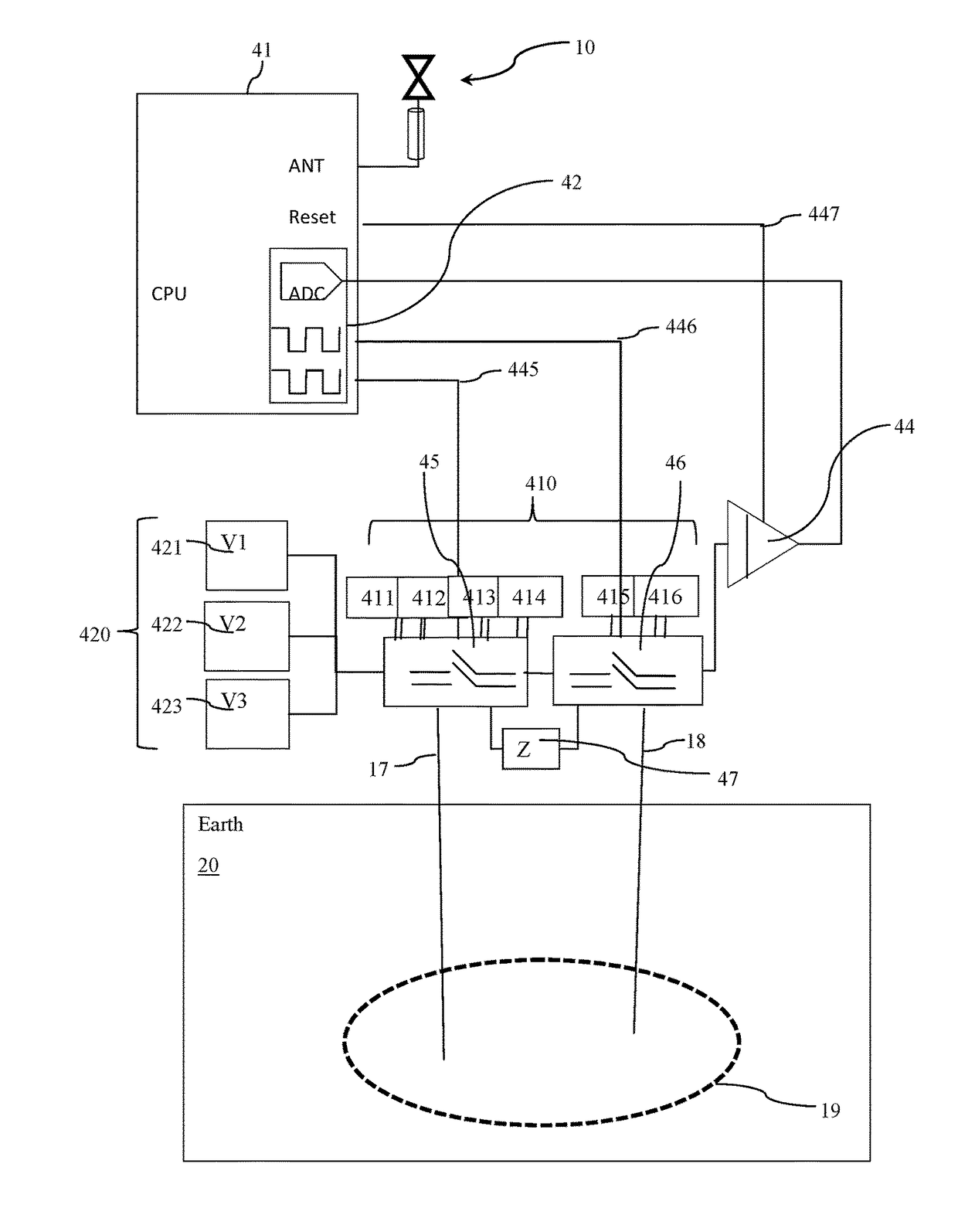Wireless soil profile monitoring apparatus and methods
- Summary
- Abstract
- Description
- Claims
- Application Information
AI Technical Summary
Benefits of technology
Problems solved by technology
Method used
Image
Examples
first embodiment
[0056]FIG. 1 shows a volumetric water content sensor comprising an integrator circuit for measuring soil moisture content 1. The VWC sensor measures moisture content at seven zones within the soil with each zone having a distinct volume of influence 19. A volume of influence is the space within the soil in electrical proximity of probe 17 and probe 18. The apparatus shown in FIG. 1 also includes a radio and radio antenna 10. The radio provides direct connection and logging of sensor data to a big data server via network including the Internet, WiFi, WiFi Max, LoRaWan™. The apparatus further includes a plurality of sensors for measuring other parameters which may be used in combination with the water content measurement for predicting soil conditions. The plurality of sensors may include: a topsoil temperature sensor 15, a root temperature sensor 16 and an air temperature sensor 13, a humidity sensor 12 and a light sensor 11. The electronics for the moisture sensor are housed in an e...
second embodiment
[0059]The second embodiment shown in FIG. 2 includes the means for measuring soil moisture content also at several levels within the soil and includes the plurality of sensors. The probes in this embodiment, however, are spaced horizontally and provide for a larger volume of influence by further separating the probes. Volumes of greater than a cubic meter can be sampled using the method of this invention. It is noted that previously available sensors measure up to only a few centimeters.
third embodiment
[0060]FIG. 3 illustrates a third embodiment which includes a means for measuring topsoil moisture content at numerous locations. The probe conductors in this embodiment are spaced around a wheel such as on the wheel of a tractor or lawn mower. Samples may be correlated with GPS coordinates to create a detailed topsoil moisture map.
[0061]Unlike traditional methods of moving a sensor above the surface or dragging a sensor across the material to be sampled, the current invention provides a consistent amount of pressure and contact with the soil.
[0062]The current apparatus is useful to reduce the issues associate with air gaps between the soil and sensor probes. The current invention also applies to radio frequency backscatter measurement of volumetric water content as well as time domain reflectometry measurement of volumetric water content.
PUM
 Login to View More
Login to View More Abstract
Description
Claims
Application Information
 Login to View More
Login to View More - R&D
- Intellectual Property
- Life Sciences
- Materials
- Tech Scout
- Unparalleled Data Quality
- Higher Quality Content
- 60% Fewer Hallucinations
Browse by: Latest US Patents, China's latest patents, Technical Efficacy Thesaurus, Application Domain, Technology Topic, Popular Technical Reports.
© 2025 PatSnap. All rights reserved.Legal|Privacy policy|Modern Slavery Act Transparency Statement|Sitemap|About US| Contact US: help@patsnap.com



